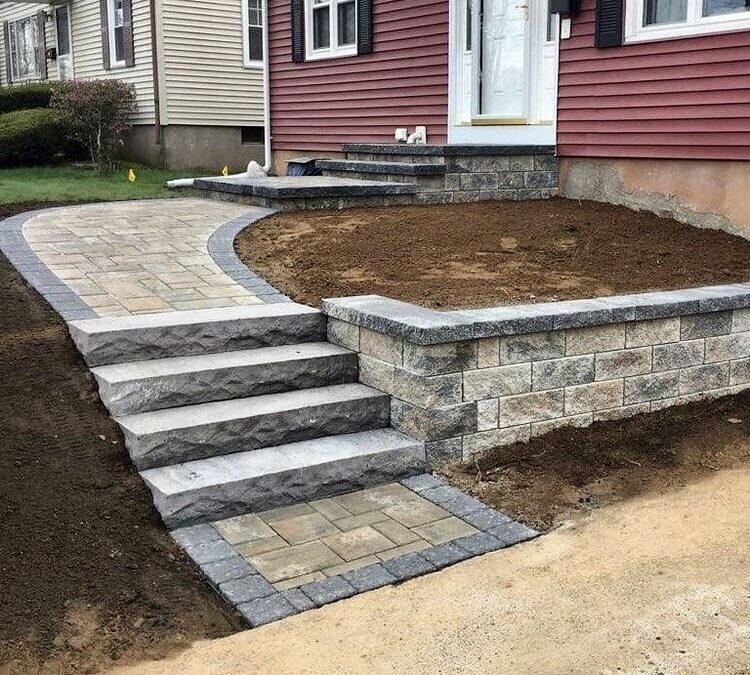In Bergen County the land consists of a hilly piedmont region that rises to the Watchung Mountains in the west and includes the Palisades, sheer sandstone bluffs along the edge of the Hudson River. The county is drained by the Hackensack, Passaic, and Ramapo rivers. Other waterways are Lake Tappan and Oradell Reservoir. Oak and hickory trees are found in wooded areas. The main recreation areas are Ramapo Mountain State Forest and Ringwood State Park. In Ringwood State Park, Bald Mountain is the highest elevation with a peak that rises to 1,152 feet (351 m). Additionally, Bergen county is the most populous county in the state. The principal communities are Teaneck, Hackensack (the county seat), Fort Lee, Fair Lawn, Garfield, Paramus, and Englewood. Mountains and people means Bergen county features the most retaining walls in New Jersey.
Retaining walls
Retaining wall is a structure used to retain backfill and maintain difference in the elevation of the two ground surfaces. Retaining walls may be effectively utilized to tackle the problem of landslides in hill areas by stabilizing the fill slopes and cutting slopes. From the initial construction cost considerations, one meter of extra width in filling, requiring retaining walls, costs much more than constructing the same width by cutting inside the hill. Similarly, the cost of a breast wall is several times more than a non-walled cut slope. However, considering maintenance, progressive slope instability, and environmental degradation from unprotected heavy excavations, the use of retaining walls on hill roads and terraces becomes essential.
Battering and dead men-tieback system
All retaining walls should lean into the hill 1 inch for every 12 inches of height. Timber walls 4 feet or higher should be tied to the hillside with “dead men” anchors (6-foot-long, T-shaped tiebacks buried in the hillside) attached to the wall every 8 feet, extending 6 feet back to a 2-foot-wide T-bar.
Dead men are not included in some interlocking-block systems if the design allows backfill to secure the blocks individually in place. Still others require geo-grid, weblike tiebacks that get buried in the backfill. Check the manufacturer’s literature. A final heads-up on masonry walls—concrete blocks chip and crack easily. Carefully inspect the blocks upon delivery, and don’t be shy about returning damaged blocks for credit.
Safeguarding Against Three Common Failures
Retaining walls usually fail slowly. Common problems can often be fixed if you act quickly. You can also protect a new wall in the building process by safeguarding it against the three most common failures:
Blowout Failure
What happens: A load is added within 3 feet of the top of the wall. The wall leans out at the top and eventually tips over
What to do: Tell your landscape architect or engineer if a car or shed will be placed near the wall. The pro should then beef up the footer and increase the number of tiebacks or dead men to add strength. Adding retrofit tiebacks is expensive and requires excavation, partial dismantling, and reengineering the wall.
Wet-Soil Failure
What happens: Soil behind the wall gets saturated, causing hydrostatic water pressure and weight to topple the wall.
What to do: Replace native soil behind the wall with 3/4-minus or bank-run gravel for 2 feet. Line the inside base of the wall with a 4-inch perforated tile drain on a gravel bed that slopes 1 inch for every 4 feet of run to carry water to daylight or a dry well. Topsoil should take up only the top 6 inches behind the wall.
Frost-Heave Failure
What happens: Retaining the wall lacks proper drainage or a footer. Soil becomes saturated and freezes, heaving upward and breaking the wall apart.
What to do: Walls should rest on 3/4-minus or bank-run gravel, with the footer or wall base buried beneath the frost line (6 to 48 inches, depending on region). For deep frost, use concrete block rather than retaining wall to ground level, then build the retaining wall on that. Well-drained gravel behind and beneath the wall can substantially diminish frost heaving.
Contact us
At Jun’s Pro Services, we have solutions for retaining walls in Bergen County. To help you decide if our solutions are right for you, we offer free estimates throughout our New Jersey service areas. To schedule an appointment, contact Jun’s Pro Services by phone or email today! Our experts serve all central and northern New Jersey including Bergen, Essex, Hudson, Hunterdon, Passaic, and Union Counties. We specialize in custom design. Address 55 Terrill Road, Plainfield, NJ 07062. https://junsproservices.com
Contact us at 908-322-1533

